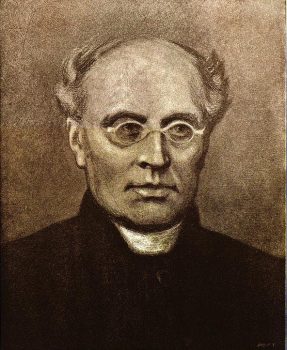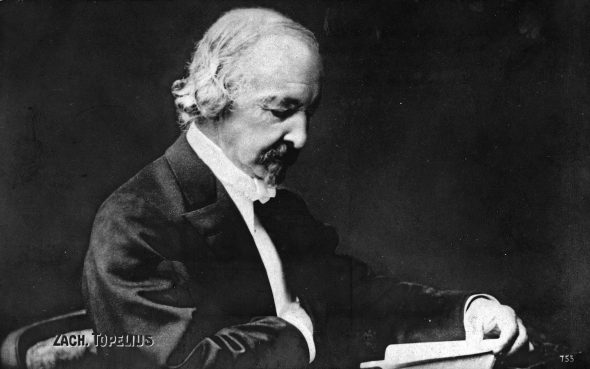Author: George C. Schoolfield
Life as an outsider
Issue 3/1988 | Archives online, Authors
Runar Schildt, short story writer and playwright, has the status of a minor classic in Swedish-language literature. Among Finnish-speaking readers, however, let alone those abroad, he is less widely known. George C. Schoolfield re-evaluates the short career of an author whose life ended tragically in suicide
Now and again, Runar Schildt (1888–1925) is described as ‘a Finland-Swedish classic,’ and the description is accurate: he is one of those rather few figures from the minority’s literary past whose works can be read with genuine pleasure today, and there are plenty of testimonies to the living quality of his production.
The late author Anders Cleve once remarked that Schildt had been his most essential literary experience (although Cleve never showed, save in his first and best book, Gatstenar [‘Paving stones’ 1959], that he had learned Schildt’s admirable concision); and the cultural essayist Johannes Salminen, the novelist and dramatist Johan Bargum, the political observer Leif Salmén have all paid tribute to Schildt’s suggestive style, social acuity, and emotional penetration. More…
Poetry and Patriotism
Issue 4/1985 | Archives online, Authors, Essays

J.L. Runeberg. Painting by Albert Edelfelt. 1893.
Much revered, but little read today, Johan Ludvig Runeberg (1804-1877) is famed for his patriotism and glorification of war in a just cause. Yet Finland’s national poet did not write in Finnish, and never heard a shot fired in anger. It is, perhaps, time for a reappraisal.
What did he himself think about becoming a national poet?
Enjoyed it, probably? Who wouldn’t!
Did he write what he wanted and let
the people find their own interpretation?
Or did he write what he believed
the people expected
of a national poet?
Lars Huldén, 1978
It would not be inappropriate to begin a collection of thoughts about Finland’s ‘national poet,’ Johan Ludvig Runeberg, with a biblical text, Second Samuel, 1:25: ‘How are the mighty fallen!’ Runeberg does not own the position he once did, either in the world at large or in Scandinavia; even in his home land his exceptional grandeur has been reduced or, horribile dictu, smiled at. More…
Fairy tales of a journalist
Issue 1/1984 | Archives online, Authors

Zacharias Topelius. Photo: SLS
In 1918, Selma Lagerlöf, the Swedish novelist and recipient of the Nobel Prize for literature, was commissioned by the Swedish Academy to write a book on the life and works of Zacharias Topelius, in celebration of the centennial of his birth. As she says in the introduction to her Zachris Topelius of 1920 (where she uses the familiar contraction of the great man’s given name), she realized that she was up against the monster work-in-progress of Valfrid Vasenius, which had already reached three volumes and which would not be finished, with six, until 1930.
Lagerlöf jotted down her almost novelistic account of Topelius’s first thirty-eight years, from his birth in Ostrobothnia, as the son of a country doctor with strong folkloristic interests, to the appearance of his major patriotic poem of 1856, Islossningen i Uleå älv (‘The breakup of the ice in Uleå river’), filled with hopeful thoughts about an independent Finland. It can be reckoned that more people have enjoyed Lagerlöf’s chatty pages than have struggled with Vasenius’ positivistic monument, and that a common notion of Topelius, influenced either by Aunt Selma or schoolteachers who have partaken of her burbling spirit, is that of a man too good and emotionally too limited to be great. More…
A portrait of Elmer Diktonius
Issue 2/1982 | Archives online, Authors

Elmer Diktonius at his home in Kauniainen (Grankulla). Photo: Wikimedia Commons / Public domain
Elmer Diktonius, one of the leading Finland-Swedish modernists of the 1920s, was a revolutionary poet, prose-writer and critic who also tried his hand at composing. Professor George Schoolfield, whose article on Diktonius appears below, appends his own translations of several of the lyrics: a filler selection is going to be published in the United States, Recently Professor Schoolfield has been working on a biography of Diktonius which he hopes to publish soon.
The literary fate of the Finland-Swedish modernist Elmer Diktonius (1896-1961) has not been an altogether happy one. Saluted early and late in his career as Finland’s Strindberg and as a possible rival to Mayakovsky in the contest for the greatest lyricist of the revolution, Diktonius would seem, surely, to deserve a place on the world’s literary stage. Yet the attention he has received outside the north has been mostly unwitting: the writers of program notes quote his description of the Silbelius Fourth, ‘the bark-bread symphony’ without knowing its source, the collected concert-reviews of Opus 12: Musik (1933). Surveys that might have introduced him to a larger public are silent. The chubby Pelican Guide to the European Literature of Modernism ignores him; the Penguin Book of Socialist Verse omits him from its 134 specimens of the lyric left; and Ulrich Weisstein’s volume of Expressionism as an International Literary Phenomenon does not have him in its chapter on ‘Expressionism in Scandinavia’, although he would qualify – as the Swedish scholar Bill Romefors has proved – as the major northern heir of German expressionism. More…
-
About the author
George C. Schoolfield is professor emeritus of German and Scandinavian literature, Yale University. He is an author, editor and translator of numerous books, among them A Baedeker of Decadence. Charting a Literary Fashion, 1884–1927 (2003) and A History of Finland’s Literature (1998). Schoolfield has written articles and books on Rainer Maria Rilke and on Swedish and Finland-Swedish writers including Selma Lagerlöf, Elmer Diktonius and Edith Södergran.
© Writers and translators. Anyone wishing to make use of material published on this website should apply to the Editors.
